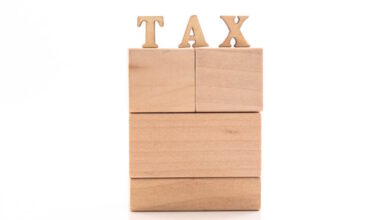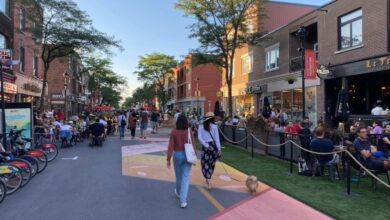Calgary’s moment of choice: How the city can break its mould but preserve its soul
Calgary is one of those cities that’s made up, largely, of people who have come from somewhere else, but Peter Schryvers is one of those rare 30-somethings who was born and raised here.
As he grew up, he watched the city grow up around him, in fits and starts.
The Calgary of his childhood was home to just over 600,000 people — a vastly different place from the city of more than 1.2 million where now chooses to make his adult life, as a city planner. And “choose” is the key word there, both for Schryvers, personally, and for the future he envisions for Calgary.
“We need to build a city that people choose to live in,” he said.
In the first three parts of this Road Ahead series, we’ve explored choice — economic and political choices, choices about our perceptions and expectations — on the provincial level. We’ve explored the complexity of the challenges Alberta faces, and how it will take a multiplicity of changes, big and small, to chart a future path for our province.
Calgary, meanwhile, faces its own set of specific choices.
These choices are likely to be generational, in nature. Or, at the very least, affect different generations in different ways. Together, we must decide how to build our city for a future that won’t look like its past. How to grow beyond our roots as a town dominated by a single industry. How to shed old stereotypes that might now hold us back, while staying true to our city’s soul.
There are good reasons to care about this social stuff — it has economic consequences.
Cities don’t just happen
In practical terms, Schryvers says Calgary must reckon with how to attract more people — particularly talented young people — to come and build their lives here, even during hard economic times. To be in it for the long haul, because they see more on offer from this place than a fat but capricious paycheque.
Cities that pull this off, experts say, can reap long-lasting rewards. A healthy supply of skilled workers and innovative entrepreneurs can help build a diverse, resilient economy with enough critical mass to carry considerable momentum through downturns. It’s a way we could sidestep the cycle of boom and bust.
But cities don’t just happen. They are the collective result of countless decisions made by governments, institutions and individuals. And the choices we make don’t come with guaranteed outcomes. Mistakes are inevitable.
This moment in Calgary’s history, it seems, is particularly well suited to reflect on who we are, discern what we want to become and how we might get there.
At this point in its evolution, Calgary could be described as an “arriviste city.”
The word “arriviste” refers to someone who is “just beginning to ‘arrive,’ in the sense of achieving success or making a name for oneself.” For some, that word can carry negative connotations, in the way that old money looks down on the nouveau riche. (Not that the tut-tutting of establishment types has ever been of much concern to maverick Calgary.)
Harry Hiller, an urban sociology professor at the University of Calgary, sees us as “arriviste” in another sense, too.
“An arriviste city is a city that has broken out of its old mould and is becoming something new,” he wrote, in an analysis of Calgary’s identity. “It is still in process and has not arrived at an end state but what is significant is that it challenges the old urban hierarchy to which other Canadians have developed their stereotypes.”
How often have you had friends visit from out east and say, “Wow, Calgary isn’t what I expected!” That’s the mould being broken. That’s the mental image of the city morphing from simply “Cowtown” to something more complex.
Schryvers, quite deliberately, has ensconced himself in the increasingly cosmopolitan side of Calgary. These are the physical, social and economic spheres inhabited by a growing part of the population that he says some older Calgarians may dismiss as “a bunch of hipsters” but will actually play a pivotal role in the city’s future.
These are the types of people who, by luxury or necessity (or a little bit of both) are transmetropolitan. They aren’t tied to a particular city.
They’re able and willing to pick up sticks, move and put down roots somewhere else.
At least, while they’re still young.
The young and restless
Now, these are not the same folks who came to Calgary to make some quick cash during the boom, before blowing out of town the minute things got rough.
“The people who came to make a fast buck are gone,” Calgary historian and writer Aritha Van Herk wrote back in 2016. “The acquisitive and mercenary have left. They weren’t here for the long haul, the bumpy ride. They worked for pay, and not for pleasure.”
The transmetropolitans, by contrast, tend to put a bit more emphasis on the latter half of that pay-pleasure balance. A good income is important, of course, but many are looking to get something more out of their daily toils — even their daily commutes.
“I have one friend who lives in Hillhurst who gets to commute into work downtown every day across the Peace Bridge,” said Peter Oliver, president of the Beltline Neighbourhoods Association.
“And that little commute each day, while mundane to so many other people … is a really defining point in his lifestyle, and I think his entire outlook on life. … He says something to the effect of, ‘If you get to see beauty once a day, you’re living a beautiful life.'”
The idea of a daily bike ride over the Bow River being so pivotal to one’s sense of belonging in a city might sound trivial, even silly, to some.
But it’s a reality that urban planners think about as they make city-building decisions in an effort to compete for citizens with other metropolitan centres across the world.
There are big implications to this competition for young talent.
Which comes first: People or jobs?
It is perhaps too easy to think of our city, and whether one wants to live here, in terms of the traditional migration patterns.
First, came the jobs. Good ones. Then came the people, ready and willing to work. When the jobs dried up, many of those same people left.
But as, we’ve seen in part three of this series, the future of the economy won’t look like the past. Things are already changing and, increasingly, companies are looking at access to skilled labour when deciding where to locate their businesses.
This has turned the old pattern on its head.
“Probably for the first time in history, instead of people moving where jobs are, jobs are moving where the talent is,” Tom Murphy, a senior fellow at the Urban Land Institute, told Governingmagazine in 2016.
And these days, many skilled, educated young people — with the ability to make a life in any number of cities — are choosing where to live based on a broader range of factors than just money, gravitating especially toward urban centres rich in amenities.
It may sound airy-fairy — all beard wax, craft beer and espresso machines. But social-science research has found a correlation between civic “vibrancy” and higher levels of entrepreneurial activity.
And it’s increasingly recognized in both academic and professional circles that recruiting and retaining talent — especially talented young people — also relates to how we physically design a city, the urban geography we create, the nature that surrounds us and the social complexity of our communities.
In other words, if we make our city interesting and pleasant enough, it will help us diversify the economy. That’s something that’s ostensibly been a mission for years in this city, but remains a work in progress, especially when it comes to attracting young people.
Because lately, we’ve been losing them.
Bleeding youth
In the last two years that Calgary’s civic census asked residents how old they are, the population in every age range grew except for one.
The lone outlier was 20-to-24-year-olds, whose ranks shrunk by about 4,000 from 2014 to 2016.
“That’s massively concerning because, again, that’s the mobile population,” Schryvers said. “If they’re moving away, then we’re losing our competitive advantage.”
Recall the deficiencies that were already highlighted in Calgary’s workforce after our failure to make the short list for Amazon’s HQ2. That was a long shot bid, of course, but a lack of pre-existing talent in the high-tech industry remains an obstacle in attracting other potential employers, as well.
Why are we losing so many young people?
After all, we just finished hearing how many of today’s youth are looking for more than a traditional 9-to-5 job. That a steady paycheque may no longer be a sufficient condition to convince them to stay.
That said, it’s still a necessary one. Everyone needs to eat before they need a beautiful commute.
And, for a lot of young people lately — especially those at the earliest stage of adulthood — Calgary hasn’t been the most attractive place to make a go at making a living. Employment rates among Calgarians under the age of 25 are at their lowest point in decades. The situation is particularly dire for young men.
So how do we make things better?
In part, by re-tooling our offerings — and expectations — around post-secondary education.
The changing nature and value of education
Go to school. Get a degree or diploma. Get a job.
It was a pretty standard life plan and, up until recently, there were many in Calgary for whom this trajectory ended with “make lots of money.” (Some skipped the “get diploma” part altogether and jumped right to money, straight out of high school.)
But that’s no longer the reality. The money part isn’t as easy as it once was. Young people now face a future that’s more uncertain, and choices that look much different.
In an opinion piece for CBC a couple years back, Colleen Bangs, manager of career services at the University of Calgary, offered some advice to recent grads who found themselves thrust into a job market that didn’t look the same as when they started their degrees.
“Even though wallowing in defeat and deeming the last four years useless might seem like a reasonable option, it isn’t going to change the price of oil,” she wrote. “Make a plan and stick to it. Reset your expectations and get to work creating your own opportunities.”
Brad Donaldson, vice-president academic at SAIT, also explained just how much things changed during the downturn.
“One of the challenges in the energy sector in the past 10 years was salaries and wages inflating beyond the value of the job description. Students were leaving SAIT midway through a program and starting in their ‘dream job’ at the age of 20,” he wrote, back in 2016.
“Today, we’re re-adjusting and managing expectations. Students should be encouraged to find a job — any job — in their chosen industry and work their way up through the field. Everyone needs to earn their way to highly coveted positions.”
In Alberta, during the oil boom, many students opted to skip post-secondary altogether and even drop out of high school to work instead. Back in 2011, we had the lowest graduation rate of any province for a reason. When job offers abound, why wait to finish Grade 12 before you start collecting a paycheque?
How times have changed.
After the oil-price crash, it’s been a “tale of two labour markets,” says University of Calgary economist Trevor Tombe: one for those who have a post-secondary education, and one for those who don’t.
‘Every profession evolves’
The University of Calgary has changed, too, with major revamps of the curricula in numerous faculties that are “tailored to address needs in the community and in the marketplace.”
One challenge for both universities and colleges, however, is class size — as in, there’s not enough of them.
“We have a capacity issue in post-secondaries in Alberta — we are well behind the number of seats that we should have,” Adam Legge with the Haskayne School of Business told CBC News in late 2018.
“Edmonton has way more seats than Calgary does,” Legge added. “It’s an issue that, where I’m at now, the University of Calgary, we’ve been advocating very strongly for years and years that access to post-secondary needs to grow in Calgary, and overall in Alberta. And until we solve that problem, we’ll have a constrained pipeline of new graduates coming out to fill our labour needs.”
(Nice touch that, “constrained pipeline.”)
Even with more seats in more classes, however, the personal decisions facing prospective students as they consider what to study remain difficult and complex.
What course or program could lead to future prosperity? It’s not as clear as it once was.
And, as we’ve seen, what looks like a viable path today could turn out to be a dead end tomorrow.
Life-long learning
This challenge of choice is no longer limited to high-school students enrolling in post secondary.
Yes, they must choose the type of education they want to pursue. But many Calgarians who were mid-career — until the bust — have been forced to make similar choices, too, about re-educating themselves. Even some people with jobs are choosing to retrain in anticipation of future demands in the job market.
It’s to that end that the Schulich School of Engineering at the University of Calgary has launched a one-year masters degree in software engineering.
The program is aimed at people who already have an engineering degree in other fields — civil, electrical, chemical, whatever — and are already in the industry, but want to add another tool to their toolbox, and a particularly versatile one, at that.
Software engineering, as a standalone skill, is in high demand, says Bill Rosehart, dean of the engineering school, but is increasingly applicable to all sorts of other fields, as well.
“We think this is going to create a high-impact tech workforce to support our city and our province,” he said of the program.
All well and good, on a macro level.
For many of us, though, the idea of having to going back to school after already earning a degree or two and gaining experience in an industry, just to keep current, might sound exhausting. And what if you choose wrong? And have to go through it all again?
That’s always a possibility. But at least this is one area where we have some agency.
We may not be able to control the economy. We may have limited ability to influence government policy. We may not control the technological changes that disrupt the job market on an increasingly frequent basis. What we can decide is what part of the economy we hope to participate in. We can choose what we learn, and that can be a lifelong thing.
Education for education’s sake won’t necessarily put food on the table and a roof over your head.
But it can help — both individually and collectively, as a city.
Engineering, business, trades
Court Ellingson with Calgary Economic Development says one advantage the city already enjoys is a relatively high proportion of people with degrees in areas like engineering and business, which he believes is helping us prepare for the new economy.
“You’re much more likely and better prepared to go out and start your own company or join a company when you’ve got that higher level of education,” Ellingson says.
And it’s not just university; skilled trades continue to be a route to success, as well. In Alberta, men with apprenticeship certificates earned “more than men with a bachelor’s degree in every other province,” according to the 2016 census. (And that was during the depths of the downturn.)
Well-trained workers and willing entrepreneurs are only one half of the equation, though. For them to thrive, they need to paired with good employers and strong sources of capital investment. No matter how educated or skilled you are, it’s hard to get off the ground without some cash to kick things off.
And while wooing people may be increasingly important, cities still need to woo companies, as well. As we saw in the third part of this series, there is substantial economic benefit in luring new business investment to the city.
And here, once again, urban design plays a role.
Other cities have found success through purpose-built communities for both work and play, and even an emphasis on the finer things that city life can offer.
Clusters of vibrancy
“Growing companies do not just choose a location randomly,” wrote urban studies theorist Richard Florida.
“Rather, they cluster and concentrate in the more vibrant parts of both urban and suburban areas.”
This is something that Denver found, when it went through something of a revolution after a downturn of its own. Seeking to diversify the economy, the city also decided to spruce itself up— a civic makeover — which, through targeted tax breaks and a strategic design plan, made the city a sexier place to live, particularly for younger people.
It was widely recognized as a success.
Denver “has risen from economic stagnation and urban irrelevance to become a millennial magnet,” the New York Times wrote in a 2016 article that detailed the city’s approach to attracting youth.
Calgary has been trying to do something similar.
Take the East Village. University of Calgary environmental design professor Francisco Alaniz Uribe sees the community as the new standard for urban design in this city. The key, he says, is the “high-quality public realm.”
But, of course, this realm took decades of planning, still isn’t done, and cost a lot of cash.
Meanwhile, individual Calgarians, local communities and city planners are making choices every day about the design of the city. But the process is messy, and not everyone likes the decisions that have to be made. The debate often pits different groups against each other.
How do we densify? How tall is too tall for a tower in an older neighbourhood? Do all streets need sidewalks? Are bike paths a godsend or a barrier? Should we continue to build on the outskirts of the city?
No one said choices would be easy.
Our elected representatives on city council are now facing some major decisions, of their own, when it comes to a new arena, a broader entertainment district, upgrades to Arts Commons, an expansion to the BMO Centre and construction of a fieldhouse. The price tags for these projects, together, could reach into the billions of dollars. Which can we afford?
And in return for an investment of so much public money, how much more “vibrant” can we expect our city to become? Can we even quantify such a thing?
The reality is, we don’t know, for sure. The choices are hard, the outcomes uncertain.
But there is an impetus to act, or risk being left behind.
Build it and sell it
Even if we are able to restructure our city and build both suburban and urban vitality, today, there is increasingly stiff global competition to attract the brightest young minds to the metropolitan centres of the world.
Calgary may still be a small fry in this vast sea, but we like to think we can swim with the big fish.
Attracting young talent remains a deliberate strategy of Calgary Economic Development, which recently targeted Vancouver and Seattle with an ad campaign aimed at wooing young, urban professionals — particularly those working in the tech sector — away from the West Coast.
Promising that the “grass is greener on the other side of the Rockies,” the campaign highlighted not just the lower rents and taxes in Calgary, but the lifestyle advantages. (Though there may be those who would argue the proximity to Banff can’t make up for six months of winter in town.)
And while West Coast residents have mountains of their own, Calgary’s proximity to the Rockies shouldn’t be overlooked as a draw for people from other places.
“Regardless of what you told your parents or texted your friends when you crossed the Prairies to pitch your tent here, you didn’t come to Calgary just for a job,” the CBC’s David Gray wrote in an analysis of how the mountains shape our city.
“If you’re honest, you chose to move here in the prime of your life — move your family and plant down roots — because of what you saw in the tourist brochure. It was the whiff of adventure, the possibility of freedom and the notion of a life unrestrained. The mountains called you.”
Even the smallest decisions about how we market our city can have impact.
Freelance journalist Cailynn Klingbeil, who frequently explores urban affairs in her work, analyzed the evolution of our city’s welcome signs on the side of the highway. “If the words and pictures we use to communicate a vision of ourselves are malleable,” she wrote, “does that make our identity uncertain?”
And isn’t that what this all boils down to? A question of identity.
An identity we can discern, market, and perhaps use to capture the imaginations of would-be residents of our ever-expanding city. One that can be further shaped by those who come to take part in this collective experience we call Calgary.
As we contemplate questions like this, Rev. John Pentland believes it’s important to look inward to discern who we truly are, and what type of new thing we want to become.
‘A pioneering city’
“Calgary is a pioneering city, a place of ideas, of vision and possibility,” the Hillhurst United Church minister wrote of the city’s identity.
“This is the city of possibilities. If you live in Canada, and you have an idea, this is the place to fly them. This is the place to be.”
Pentland wrote that on Christmas Day 2015, during the depths of the downturn. It was a time of soul searching, both individually and collectively, a process he says requires “deep listening” and “wrestling with questions” like “Who am I?” and “What am I being called to do?” and “What matters most?”
“These kinds of questions deepen our purpose in the world,” Pentland wrote. “It becomes less about accomplishing something and more about being someone worthwhile in the world.”
Van Herk, the writer, had this to say about those hardy souls who stuck it out in Calgary through the last bust: “The people who stay have committed themselves to living here, perhaps despite themselves, and will work to make this city theirs, to find the good bones underneath the surface, embrace the shimmer at its heart.”
The same could perhaps be said of the next wave of people who come from elsewhere, consciously choosing Calgary, putting down roots and building a life in this, particular place.
They will change the city, but the city will change them, too. Our maverick history made present.








Redes Sociais - Comentários